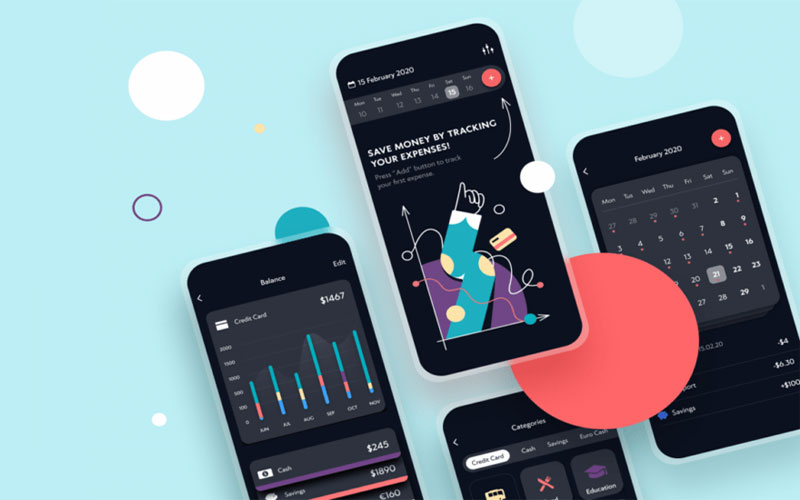How To Develop A Mobile App Your Customers Will Love
A custom mobile app can set your business apart in a world where smartphones are like extra limbs. But how do you create one that’s not just good but great? One that customers really love? This guide will walk you through the process, from the wisdom of outsourcing to key features that make a product stand out.
Why Outsource App Development?
Thinking about building an app? Here’s a tip: leave web development to the pros. Outsourcing is, first and foremost, about ease. But not only that. It’s about excellence. Professional developers bring expertise, experience, and resources you likely don’t have in-house. They stay updated with the latest tech trends and know how to blend them with user expectations. This results in polished, cutting-edge software that aligns with your business goals and user needs.
7 Must-Have Features of an App That Users Love
A great app is about what it does and how it does it. Here are seven features that can make your product a user favorite!
1. User-Friendly Interface
A great app is like a welcoming home: it looks cool and you know exactly where everything is. Ensure its design is both attractive and intuitive. Think large, easy-to-tap buttons and a layout that makes sense. This kind of user-friendly design keeps your users engaged and reduces frustration.
2. Fast Loading Times
In the app world, speed wins. If your software is slow, users might move on. Work on optimizing loading times, whether it’s the initial startup or loading content within the app. Quick, responsive interactions keep users satisfied and engaged.
3. Personalization
Imagine software that knows what you want before you do. That’s the magic of personalization. Use customer data to tailor content, suggestions, and settings to individual preferences. This personal touch makes users feel valued and enhances their experience.
4. Offline Functionality
Connectivity isn’t always a given. An app offering offline core functionalities is like a reliable friend — always there when needed. This feature is especially important for users in areas with spotty internet or those who travel frequently.
5. Regular Updates
Software that constantly evolves stays relevant. Regular updates, whether they’re for bug fixes, new features, or UI improvements, show your commitment to the product. It keeps the experience fresh and users curious about what’s next.
6. Robust Security
Security is fundamental no matter what type of product you offer to the users. This is why you must always ensure user data is protected with the latest security protocols. Safe software is trusted software.
7. Responsive Customer Support
Even the best software can encounter issues. Responsive customer support can turn a frustrating experience into a positive one. Whether it’s through in-app support, a dedicated help centre, or a responsive social media team, being there for your users is crucial.
Common Pitfalls to Avoid
Crafting a successful mobile app is as much about avoiding mistakes as it is about implementing the right features. Here’s a detailed look at common pitfalls and how to steer clear of them.
1. Overcomplicating the Design
Simplicity is the soul of efficiency. A complicated design can confuse users and spoil their experience. Focus on a minimalist design that highlights essential features instead. Remember, every element should serve a purpose.
2. Ignoring User Feedback
Feedback is a goldmine of insights. It can reveal what users love, what they don’t, and what they wish for. Regularly collect and analyze feedback through surveys, app reviews, and user testing sessions. Use these insights to refine and evolve your product.
3. Neglecting Testing
Thorough testing is non-negotiable. Bugs, crashes, and glitches frustrate users and may even damage your brand’s reputation in the long run. Implement a rigorous testing process, including beta testing with real users, to identify and fix issues before a full-scale launch.
4. Overlooking Marketing
Building a great app is just half the battle. The other half is making sure people know about it. Develop a robust marketing strategy that includes social media promotion, content marketing, influencer collaborations, and app store optimization.
5. Disregarding Analytics
Ignoring app analytics is like flying blind. Analytics provide valuable insights into user behaviour, feature usage, and potential issues. Use these metrics to make data-driven decisions.
6. Underestimating the Importance of Updates
Regular updates keep your software relevant and show users that you’re committed to improving their experience. Plan for periodic updates to introduce new features, fix bugs, and refine the UI/UX based on user feedback.
7. Not Focusing on Load Optimization
App performance, especially load times, is crucial. Users have little patience for slow software. Optimize performance by compressing images, streamlining code, and using lazy loading techniques.
8. Forgetting Accessibility
Accessibility ensures your app is usable by people with various disabilities. Implement accessibility features like voice navigation, screen reader compatibility, and adjustable text sizes. An accessible product reaches a wider audience.
Conclusion
In the end, developing a mobile app your customers will love is about striking the right balance between innovative features and user-friendly design. Outsourcing to professionals can give your software the edge it needs. Remember, it’s all about the experience you deliver. Avoid common pitfalls, listen to your customers, and you’re on your way to retaining them.











